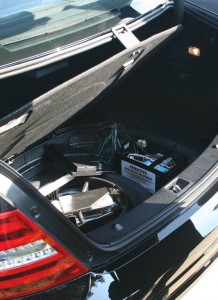
The University of Michigan is about to begin a new wave to testing connected cars to improve their future viability.
The University of Michigan’s Board of Regents is ready to approve a new project that will help make the university one of the centers for the study of connected car technology in North America.
Jim Sayer of the University of Michigan Transportation Research Institute said the rapid development of connected-vehicle technology and the potential it has to improve transportation safety, driver accessibility, optimize mobility and reduce vehicle crashes is compelling technology.
Going forward, automotive engineers will need to be familiar with connected vehicle technology, he said. Located on the university’s campus in Ann Arbor, Michigan, new Mobility Transportation Center will be supported by the university, the State of Michigan and several corporate backers with an interest in the technology.
Sayer declined to identify the corporate sponsors of the project, but he said the objective is to create a closed course on campus, easily accessible to students, which could be used for experiments in both connected vehicles and automated vehicles.
During an appearance before an alumni group, Sayer said there is no doubt that vehicles in the future will depend on connected vehicle technology to maneuver through traffic and help reduce the number of costly accidents. For once, the National Highway Transportation Safety Administration and auto manufacturers are in complete agreement that connected vehicles are necessary to safer driving.
The push for connected vehicle technology is also drawing new investment capital into the Ann Arbor area.
Sayer is the project manager of the Connected Vehicle Safety Pilot Model Deployment, a U.S. Department of Transportation (DOT)-sponsored program designed to demonstrate connected-vehicle technologies in a real-world, multimodal environment.
He has also conducted research in the areas of driver assistance and advanced safety systems development, naturalistic driving behavior, driver distraction, driver vision and pedestrian conspicuity.
(Failure to recall may cost makers $300 million. For more, Click Here.)
The DOT has agreed to continue funding the demonstration project, which covers 73 miles of road in northeast Ann Arbor and includes about 3,000 vehicles, Sayer said. The project has already collected an enormous amount of information that being analyzed.
(Click Here to get details why Daimler earnings are surging.)
The goal is to expand the project to cover the entire city of Ann Arbor and include more than 9,000 vehicles by 2016. After that, the plans call for 2,000 highly automated vehicles to be put on the road in Ann Arbor by 2021.
Sayer said the connected car tests in Ann Arbor, where data from the vehicle can be used to change traffic lights and routing in real time, show it’s is possible to ease some of the pressure on expensive and overcrowded infrastructure.
(To see Terrafugia’s flying plug-in hybrid, Click Here.)
The connected vehicle network is also being expanded to include bicyclists, motorcyclists and smart-phone carrying pedestrians. “Everyone carries a cellphone now,” noted Sayer.
The data from the connected vehicles and pedestrians creates an environment where everyone is aware of the others movements and projected movements. The information than can be used to avert potential collisions both by sending warning and by actually stopping vehicles.
